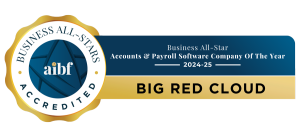Transactions are the building blocks of our accounts. Any transactions that occur within your business should be present in your accounting records. There are many different types of transactions to keep track of, such as sales and purchases.
When we talk to small businesses about their accounts, a common point of confusion is the difference between cash and credit transactions. So, what is the difference? The answer isn’t as straightforward as you might have thought.
What is a cash transaction?
It’s easy to assume that a cash transaction is simply when a customer pays for goods or services in cash. After all, it’s right there in the name! Unfortunately, it’s not quite that straightforward.
In accounting, a cash transaction is any business transaction that involves some form of exchange of money at the moment of the sale. In accounting, the word cash simply means that the transaction has been settled immediately. So it doesn’t have to be a payment involving actual paper currency.
A cash transaction can be in cash, but it can also be a payment made via a credit card, a cheque, or even a bank transfer. All of those payment types indicate an immediate settlement of the transaction and are considered cash transactions.
All cash transactions will then be recorded in your accounting books or on your accounting software. They are a critical part of managing cash flow because those payments are immediate and reflective of your daily financial reporting.
What is a credit transaction?
If a cash transaction means the immediate settlement of payment, it makes sense that a credit transaction is when settlement occurs on a later date. That’s the simple explanation, but, of course, it can be a little more complicated than that.
A good example of this is when a manufacturer provides goods to a wholesaler. The wholesaler may not have to pay for those goods immediately and can instead have some form of credit period. So a sale is made, but no settlement has occurred. So a credit transaction recognises that there is income due, which means there is a monetary impact on the manufacturer and the wholesaler alike — this is a credit transaction.
So what’s the difference between cash and credit transactions?
The only difference between cash and credit transactions is the timing of the payment. A cash transaction is a transaction where payment is settled immediately and that transaction is recorded in your nominal ledger. The payment for a credit transaction is settled at a later date.
Try not to think about cash and credit transactions in terms of how they were paid, but rather when they were paid. For example, you may buy some groceries at your local shop and pay for them in cash there and then, and that’s a cash transaction. However, what if you paid by card rather than cash? That will also be classified as a cash transaction because you paid immediately.
Credit transactions are paid after the exchange of goods or services takes place and usually after an invoice for the transaction is issued. So those businesses with a greater number of credit transactions will need to know how to write an invoice. The time taken before payment can vary depending on the types of businesses or even the industry in which the transaction occurs. Once again, when payment is finally settled for the invoice, it may be done with cash, card, or any other payment method, but it is still a credit transaction.
Understanding more about cash and credit transactions
Businesses will have a mixture of cash and credit transactions that make up their accounting records. Some companies may have the majority of their transactions be either one or the other, and some will have a more even split. However, you would be hard-pressed to find a business that didn’t have at least one cash or credit transaction occur during its lifetime.
Along with whether a transaction is classified as cash or credit, another category is used to classify basic accounting transactions. We also need to know whether or not it is a sale, purchase or payment. This gives us a list of basic transactions:
- Cash sale
- Credit sale
- Cash purchase
- Credit purchase
- Cash payment
- Credit payment.
Some of these, like cash and credit sales and credit purchases, are more common than the others, but depending on what type of transaction we have, we can find a home for it in our accounts.
Summary of the differences between cash transaction and credit transaction
Despite the names, a cash transaction doesn’t have to involve actual paper currency, and credit transactions can be paid using any method. So the main difference between cash and credit transaction is all about timing:
- A cash transaction will be paid immediately
- A credit transaction will be paid at a later date
Looking a little more in-depth at the accounting side of things, a cash transaction will be recorded under both a cash basis and in mercantile basis accounting. A credit transaction will only ever be recorded in your mercantile basis accounting.
What’s important to remember is that when a business has a cash transaction, it will only need you to record that transaction once. That record will highlight the fact that the payment will land immediately (or almost immediately) in your business bank account or your cash totals. So a cash transaction will tend to have a more immediate impact on your cash flow and cash flow forecasting.
Credit transactions, on the other hand, may require multiple record entries. They will need to be recorded at the moment of the transaction, with new entries whenever a payment or part payment is made.
Although credit transactions can now be accessible to anyone, it’s still a fact that more small businesses use cash transactions. In retail, in particular, cash settlements are the norm. Larger businesses, especially B2B brands, will be much more likely to have a credit transaction system in place.
Start getting insights from your cash and credit transaction records
Although it’s easy to get confused about the difference between cash and credit transactions, it’s all a lot more straightforward than it first seems. It’s all about the timing of the payment and knowing how best to record those payments in your accounts.
Do you want to learn more about where to record these different types of transactions in your accounting records? We have an exciting set of simple tutorials in place to teach you bookkeeping basics just like this.
Interested in finding out more about how Big Red Cloud’s cloud-based accounting software can streamline your financial reporting? Sign up for our free accounting software trial and find out how we can help turn your finances into a valuable resource that can guide the growth of your business.




